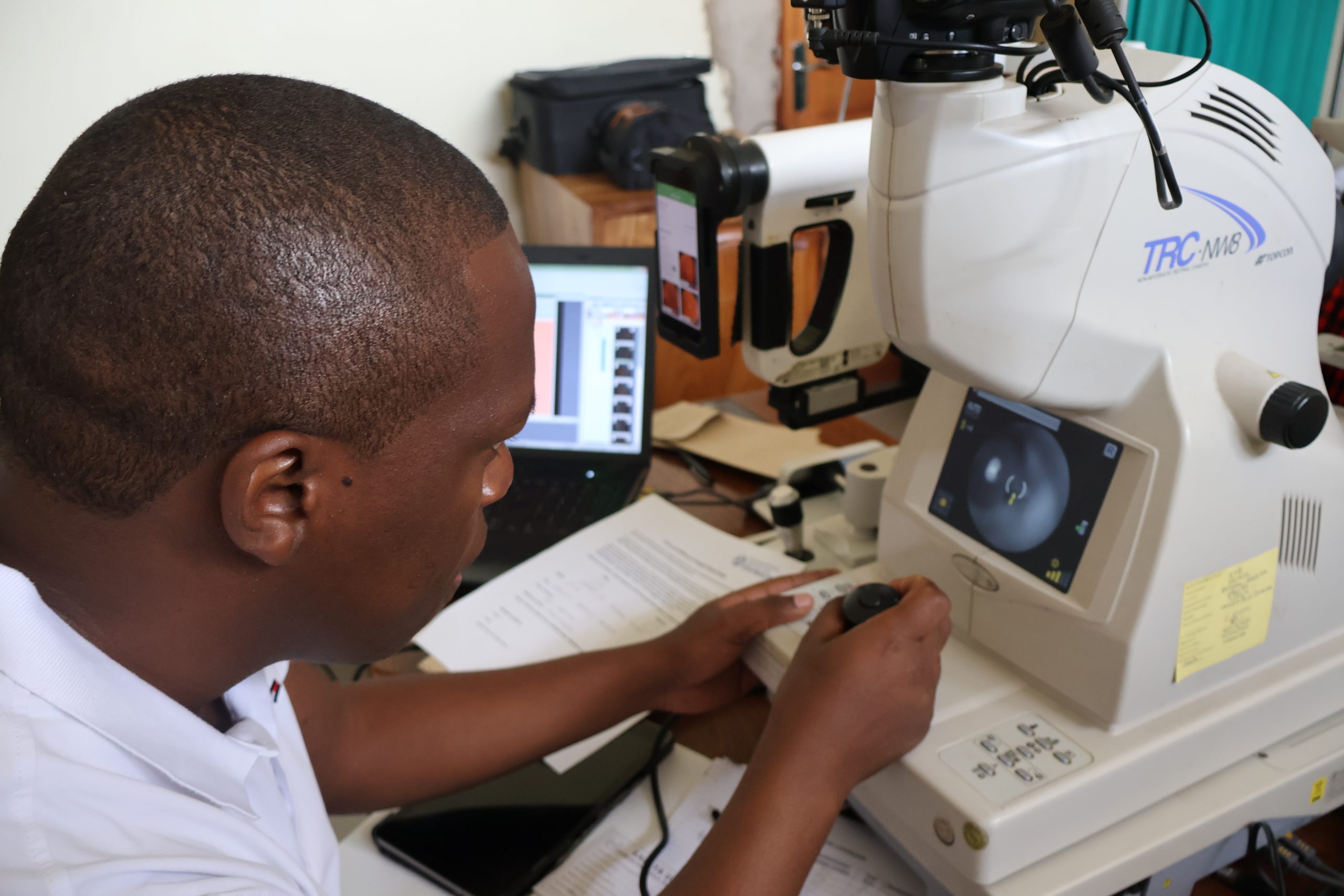Tanzania has the highest age-adjusted prevalence of diabetes in sub-Saharan Africa. Diabetic retinopathy (DR), a common complication, is a significant cause of vision loss; but with effective screening and treatment this often can be prevented.
However, with very few specialist eye care staff in Tanzania this is a major challenge. Artificial intelligence (AI) systems, which automate clinical decision making and therefore task-shift away from specialist staff, could contribute to improved diabetic retinopathy screening services in low-resource settings.
A project by the International Centre for Eye Health aims to improve outcomes for people with DR in Tanzania by utilising AI within programmes. A clinical trial that is underway aims to provide people either with a diagnosis for DR by an AI at the point of screening, or through a doctor, which can take several days or weeks.
Results will be published later in 2025, but the first stage of the research involved selecting an appropriate AI system for the context.
Some key considerations for the AI were as follows:
• As they were to be used as medical devices the researchers only considered AI systems that had received appropriate regulatory approval (European/FDA as Tanzania does not currently have a regulatory framework)
• The tool had to be able to function offline due to limited internet access in rural hospitals
• The tool couldn’t have its data be cloud-based, as Tanzanian data privacy laws do not allow the transfer of clinical or imaging data outside of the country with a formal agreement
• The tool having published data from an African population was also an important consideration, to ensure proper performance in the relevant population
With the above considerations, it was decided that the SELENA+ AI system (owned by EyRis PTE, Singapore) was the most suitable choice. The system has European, South African and UAE regulatory approval, can function offline and already had published validation data from Zambia.
The researchers also noted that the system has an intuitive interface, with the screening programme medical officer being trained to use the system in less than one hour.
The system has been implemented into the programme and has functioned well so far, but the team have noted some limitations. The AI tool doesn’t detect other blinding conditions, for instance glaucoma, which would be caught by a human grader. This means a fully automated system may not be appropriate, unless the software is able to diagnose more conditions than DR. They also note that as the medical photographer is now tasked with counselling the patient about their result at the point of screening, this is also a key consideration as to the success of the programme.
Publication
Cleland C, Makupa WU, Shilio BR, Rwiza J, Macleod D, Bascaran C, Burton MJ. Implementing an artificial intelligence system into a diabetic eye screening programme in Tanzania. Transactions of The Royal Society of Tropical Medicine and Hygiene, December 2024. https://doi.org/10.1093/trstmh/trae132

